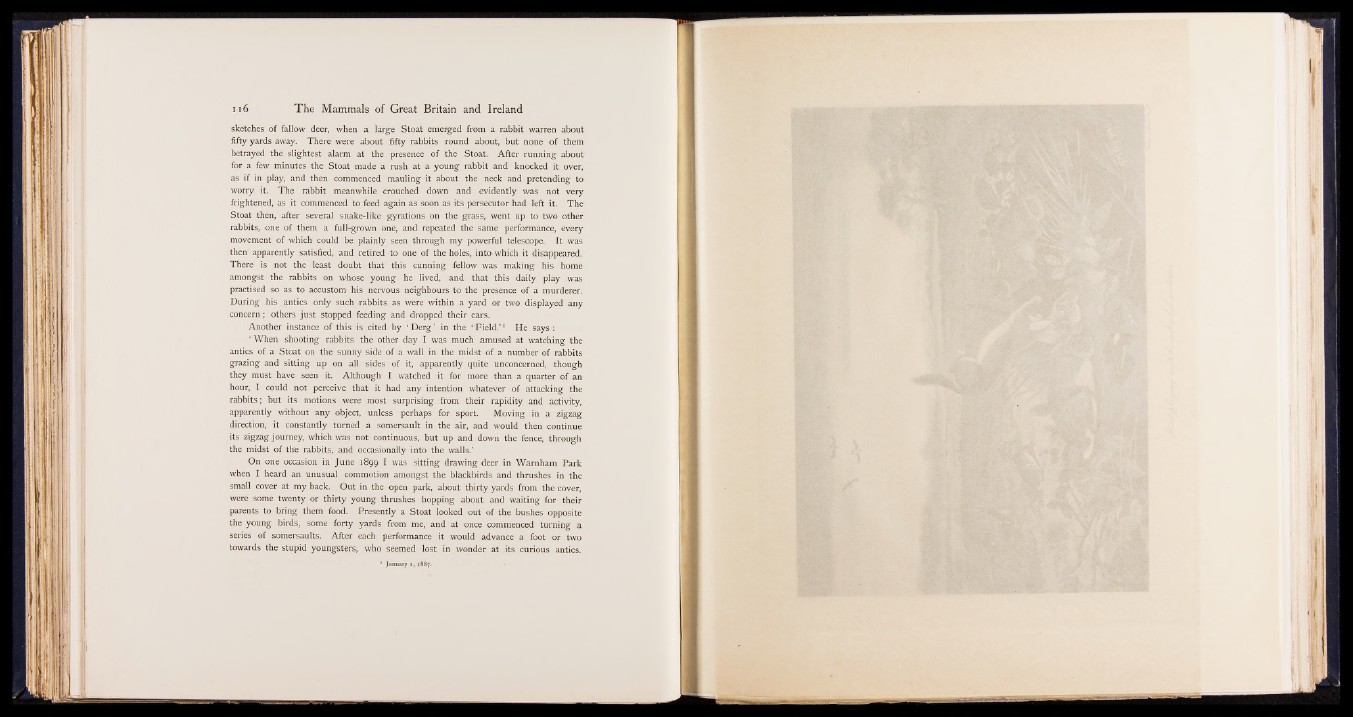
The Mammals of Great 1 16 Britain and Ireland
sketches of fallow deer, when a large Stoat emerged from a rabbit warren about
fifty yards away. There were about fifty rabbits round about, but none of them
betrayed the slightest alarm at the presence of the Stoat. After running about
for a few minutes the Stoat made a rush at a young rabbit and knocked it over,
as if in play, and then commenced mauling it about the neck and pretending to
worry it. The rabbit meanwhile crouched down and evidently was not very
frightened, as it commenced to feed again as soon as its persecutor had left it. The
Stoat then, after several snake-like gyrations on the grass, went up to two other
rabbits, one of them a full-grown one, and repeated the same performance, every
movement of which could be plainly seen through my powerful telescope. It was
then apparently satisfied, and retired to one of the holes, into which it disappeared.
There is not the least doubt that this cunning fellow was making his home
amongst the rabbits on whose young he lived, and that this daily play was
practised so as to accustom his nervous neighbours to the presence of a murderer.
During his antics only such rabbits as were within a yard or two displayed any
concern ; others just stopped feeding and dropped their ears.
Another instance of this is cited by ‘ D erg ’ in the ‘ Field.’ 1 He says :
‘ When shooting rabbits the other day I was much amused at watching the
antics of a Stoat on the sunny side of a wall in the midst of a number of rabbits
grazing and sitting up on all sides of it, apparently quite unconcerned, though
they must have seen it. Although I watched it for more than a quarter of an
hour, I could not perceive that it had any intention whatever of attacking the
rabbits; but its motions were most surprising from their rapidity and activity,
apparently without any object, unless perhaps for sport. Moving in a zigzag
direction, it constantly turned a somersault in the air, and would then continue
its zigzag journey, which was not continuous, but up and down the fence, through
the midst of the rabbits, and occasionally into the walls.’
On one occasion in June 1899 I was sitting drawing deer in Warnham Park
when I heard an unusual commotion amongst the blackbirds and thrushes in the
small cover at my back. Out in the open park, about thirty yards from the cover,
were some twenty or thirty young thrushes hopping about and waiting for their
parents to bring them food. Presently a Stoat looked out of the bushes opposite
the young birds, some forty yards from me, and at once commenced turning a
series of somersaults. After each performance it would advance a foot or two
towards the stupid youngsters, who seemed lost in wonder at its curious antics.
January i, 1887.